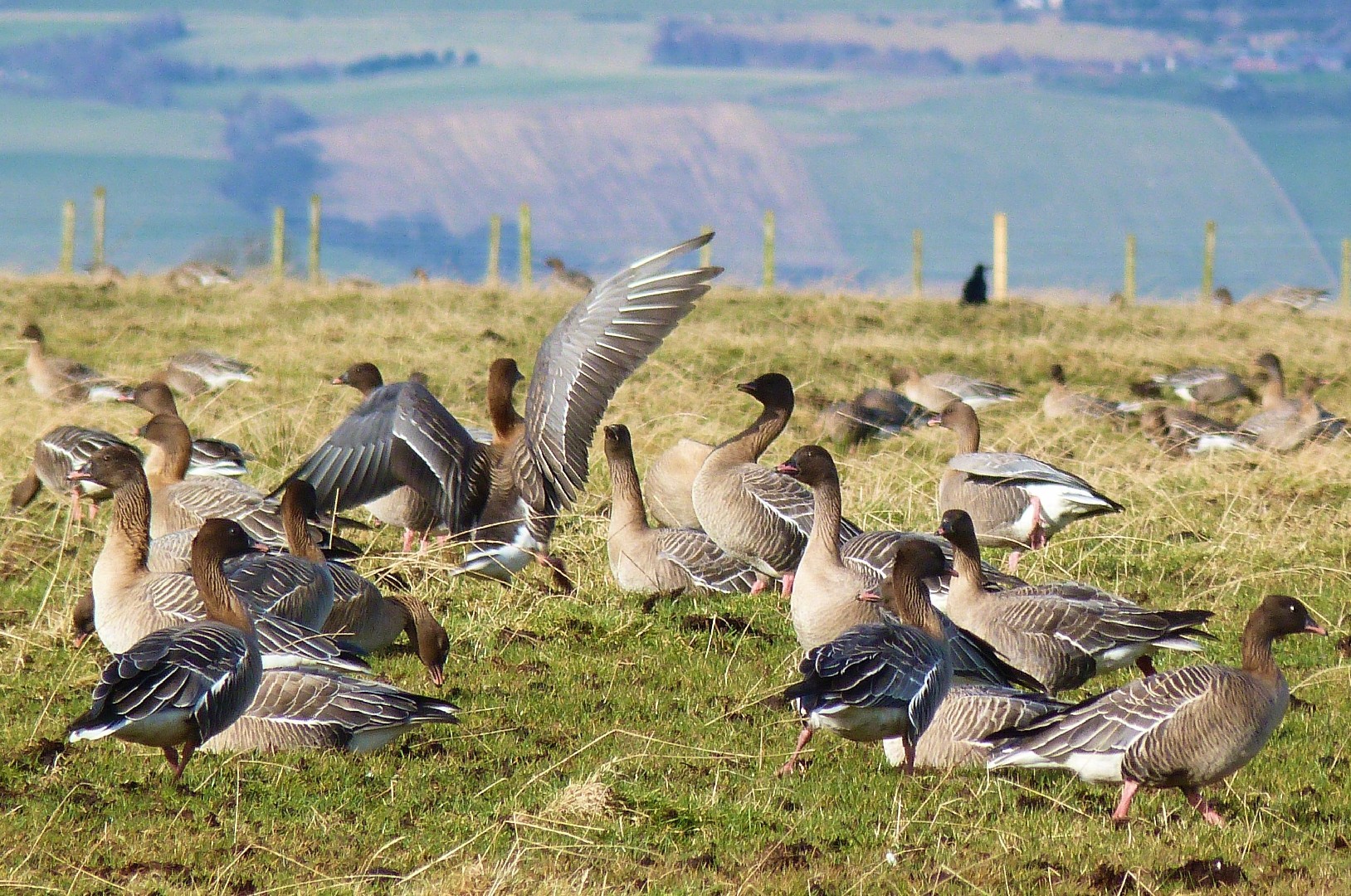Pink-footed Goose
A species of Grey And White Geese Scientific name : Anser brachyrhynchus Genus : Grey And White Geese
Pink-footed Goose, A species of Grey And White Geese
Botanical name: Anser brachyrhynchus
Genus: Grey And White Geese
Content
Description General Info
Description
The pink-footed goose (Anser brachyrhynchus) is a goose which breeds in eastern Greenland, Iceland and Svalbard. It is migratory, wintering in northwest Europe, especially Ireland, Great Britain, the Netherlands, and western Denmark. The name is often abbreviated in colloquial usage to "pinkfoot" (plural "pinkfeet"). Anser is the Latin for "goose", and brachyrhynchus comes from the ancient Greek brachus "short" and rhunchos "bill". It is a medium-sized goose, 60–75 cm (24–30 in) long, the wingspan 135–170 cm (53–67 in), and weighing 1.8–3.4 kg (4.0–7.5 lb). It has a short bill, bright pink in the middle with a black base and tip, and pink feet. The body is mid-grey-brown, the head and neck a richer, darker brown, the rump and vent white, and the tail grey with a broad white tip. The upper wing-coverts are of a somewhat similar pale bluish-grey as in the greylag goose, and the flight feathers blackish-grey. The species is most closely related to the bean goose Anser fabalis (having even been treated as a subspecies of it at times in the past), sharing a similar black-and-coloured pattern bill, but differing in having pink on the bill and legs where the bean goose is orange, and in the paler, greyer plumage tones. It is similar in size to the small rossicus subspecies of bean goose, but distinctly smaller than the nominate subspecies fabalis. It produces a medley of high-pitched honking calls, being particularly vocal in flight, with large skeins being almost deafening. 
Size
66 cm (26 in)
Colors
Brown
Black
Bronze
Gray
White
Life Expectancy
22 years
Nest Placement
Ground
Feeding Habits
Pink-footed Goose mainly consumes a vegetarian diet, feeding on tundra plants in summer and agricultural crops, particularly oilseed rape, sugar beet, potatoes, and grasses, in winter. Their grazing can benefit farmers by gleaning leftover crop residues, helping prevent disease transmission.
Habitat
Pink-footed Goose breeds in Arctic tundra environments, favoring rocky outcrops, cliffs near glaciers, and islets in lakes for protection from predators. During the breeding season, pink-footed Goose is commonly found in very open areas and may utilize damp sedge meadows for feeding. Non-breeding habitats include coastal estuaries and flat agricultural lands, with an increasing preference for improved grasslands and cereal fields. The species exhibits a notable shift from primarily using coastal tundra and saltmarshes to favoring managed agricultural areas in winter.
Dite type
Herbivorous
General Info
Feeding Habits
Bird food type
Species Status
Not globally threatened.
Scientific Classification
Phylum
Chordates Class
Birds Order
Waterfowl Family
Geese Genus
Grey And White Geese Species
Pink-footed Goose 